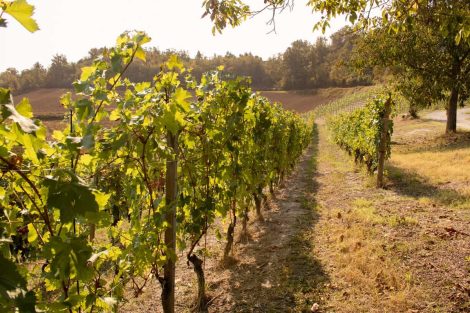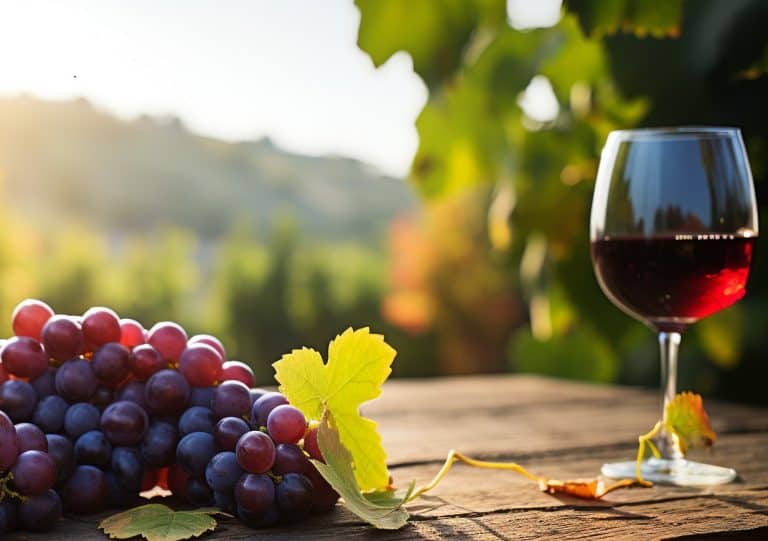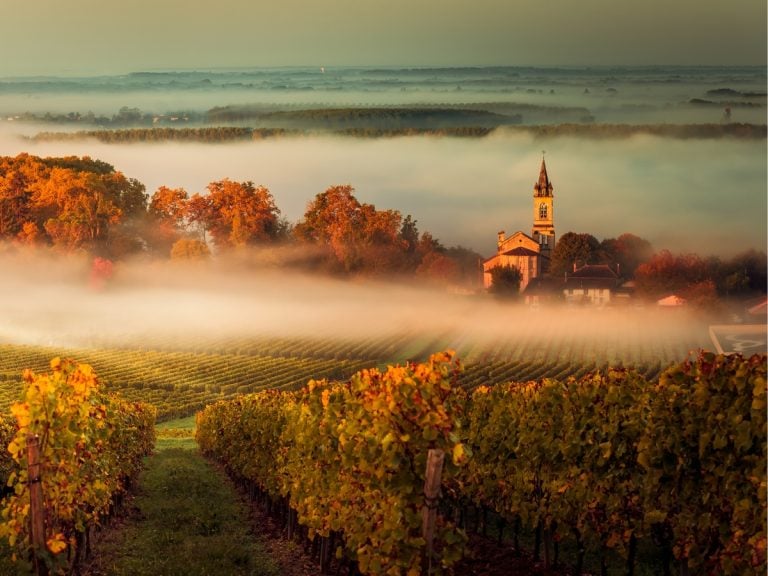Piedmont is a truly vast region, and equally vast is its ampelographic heritage. When we consider only red grapes, Nebbiolo and Barbera are obviously the two best-known varieties, and probably the most cultivated as well. But lately, other varieties, equally historic but perhaps a little less known to the general public, have been emerging into the spotlight. Surely this is the case of Grignolino: native to the hills of Monferrato, between Asti and Casale, this is still its chosen territory; much more widespread in the past, the phylloxera of the early twentieth century did not spare it, and farmers, at the time, instead of replanting it, turned to more resistant varieties.
Today, with consumer tastes turning to more agile, dynamic, and identity-focused wines, Grignolino is experiencing a new success: light in color, with a spicy and intriguing profile, in the best versions, it is quaffable without losing depth. With Dolcetto, we remain in Monferrato, which represents the cradle from which it then spread to Cuneo and Alessandria (to remain in Piedmont). It is a grape that becomes the protagonist in different denominations, the main ones being Dogliani, Ovada, and Diano d'Alba. Despite its name, "dolcetto" has nothing sweet about it: the resulting wines are characterized by sensations of small black berries accompanied by an almond sensation that is often found in the finish.

Tre Bicchieri 2024. The Best Dolcetto
Here we focus on the four 100% Dolcetto wines in the denominations of Ovada and Dogliani that have been awarded Tre Bicchieri 2024 in Gambero Rosso's Vini d'Italia guide.
Cocoa on a beautiful earthy background for the Dogliani Papà Celso by Abbona, fine and typical. It is fine and typical, with an excellent body, full and soft palate, with a long and tasty finish. Celso Abbona was among the first to believe in the potential of the Dogliani terroir, seeking to enhance its flagship wine: Dolcetto. The family history continued with Marziano and his daughters Mara and Chiara. For over twenty years, the vineyard - which includes plants over 60 years old - has been managed organically, a true philosophy of life that underlies the company's principles and translates into practices aimed at maximum respect for the environment.
The Dogliani Sup. San Bernardo 2019 by Anna Maria Abbona is rich in black fruit, with notes of blackberry and currant and a soft and velvety palate. Anna Maria Abbona and Franco Schellino, now supported also by their sons Federico and Lorenzo, have led the success of the company, which started as the inheritance of grandfather Giuseppe, a wine project dating back to 1936. At the heart of the company's project are Dogliani wines, declined in four labels, to which have been added Barbera, Nebbiolo, Riesling, and Nascetta, but also Chardonnay and Pinot Noir for Alta Langa.
The Dolcetto Sup. Du Riva by Tacchino, in the 2019 version, is a treat of elegance and sophistication: intense and engaging olfactory phase with the fruit still prominent and an explosive palate for character and personality. Tacchino is a historic reality of Ovada, which has built its fortune by reinterpreting with more modern concepts the classic vineyards of the territory. The great work done in the vineyard, but above all in the management of fermentations and wood maturation of the flagship wines, results in a production that enjoys great care. It is Dolcetto and Barbera that have given us great emotions over the years, while little space is dedicated to international varieties, with only Cabernet Sauvignon in Monferrato Rosso.
The Dolcetto Convivio 2021 by Gaggino is intense with fruity aromas on vegetal notes and a spicy background; explosive palate for intensity and body, which extends sapidly on an endless finish. Gabriele Gaggino's wines, rich and full-bodied, often manage to express a complex aromatic profile, linked to the characteristics of the grape variety. Wood maturation is handled very carefully when used. For several years now, Roberto Olivieri, a Piedmontese winemaker with great experience, has been the guardian of the quality of the products. The strengths, even in the presence of international grape varieties, remain the classic Piedmontese varieties.


 Women are the best sommeliers. Here are the scientific studies
Women are the best sommeliers. Here are the scientific studies Where to eat at a farm stay in Sicily: the best addresses in the Provinces of Trapani, Palermo, and Agrigento
Where to eat at a farm stay in Sicily: the best addresses in the Provinces of Trapani, Palermo, and Agrigento Wine in cans, bottle-fermented, and alcohol free: the unstoppable change in Gen Z’s tastes
Wine in cans, bottle-fermented, and alcohol free: the unstoppable change in Gen Z’s tastes The great Bordeaux exodus of Chinese entrepreneurs: around fifty Châteaux up for sale
The great Bordeaux exodus of Chinese entrepreneurs: around fifty Châteaux up for sale Dubai speaks Italian: a journey through the Emirate's best Italian restaurants
Dubai speaks Italian: a journey through the Emirate's best Italian restaurants






